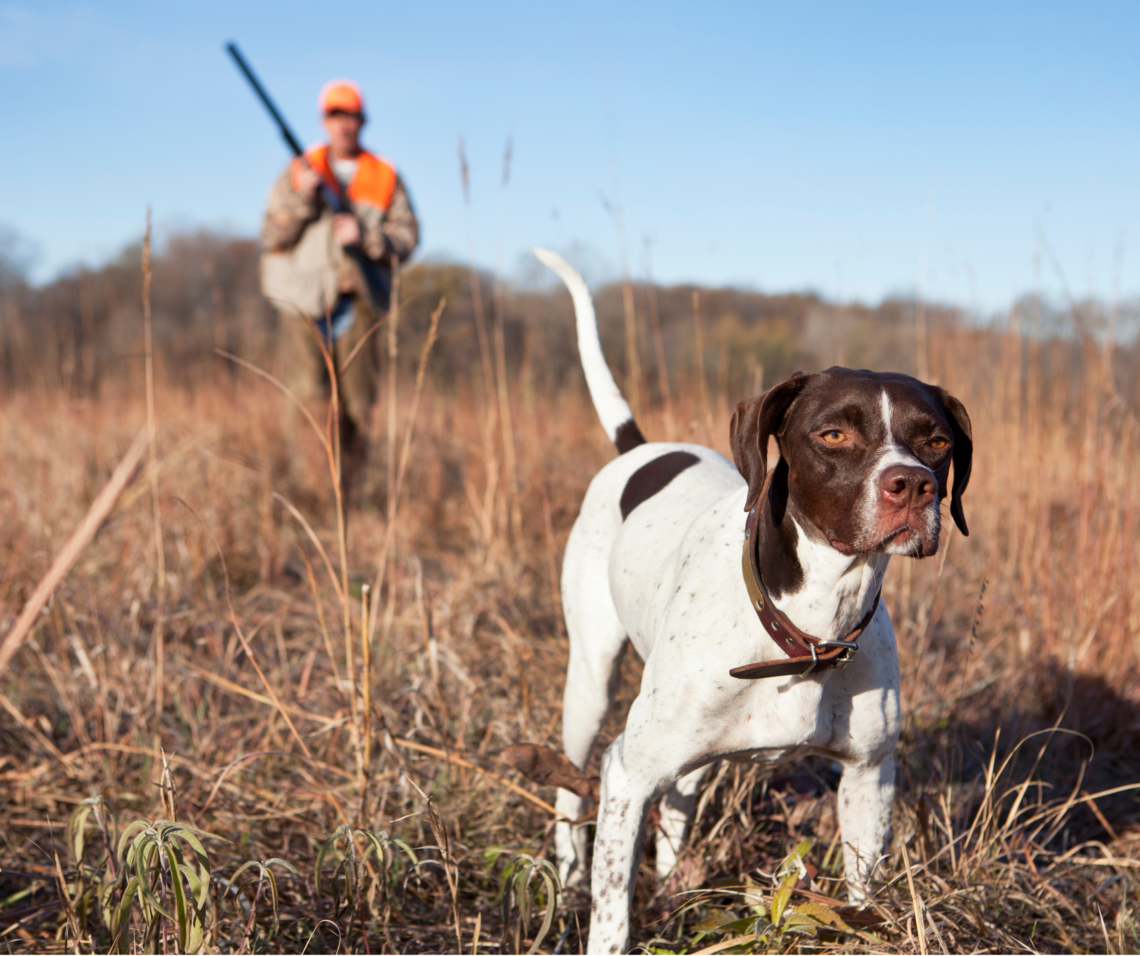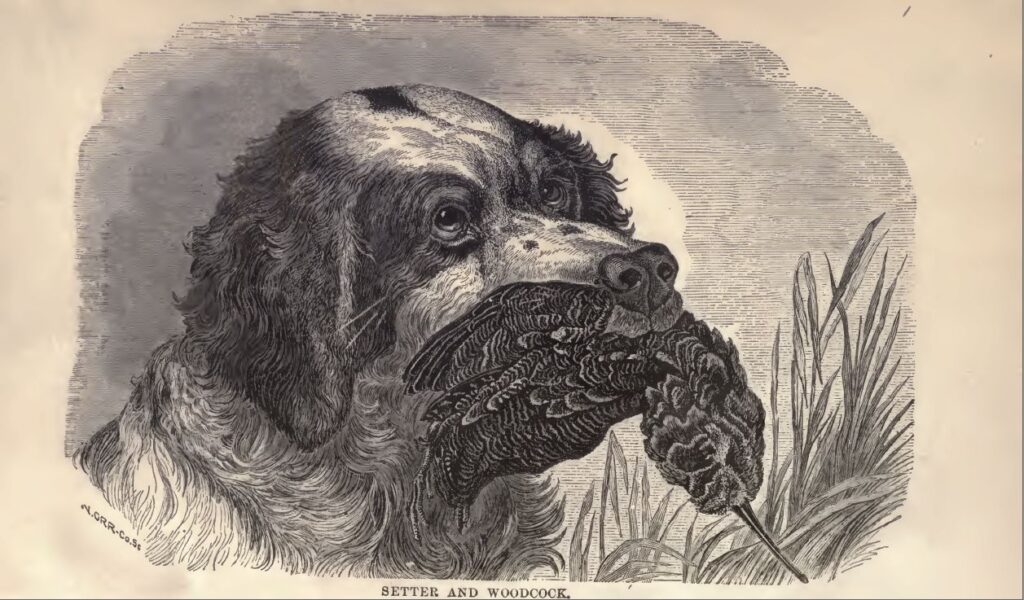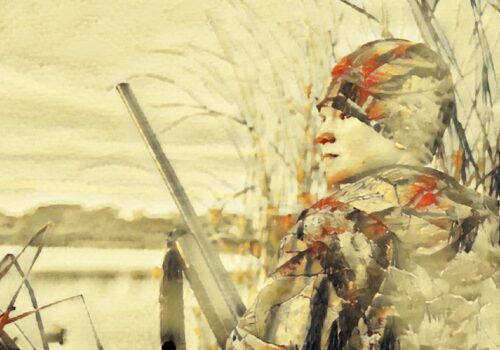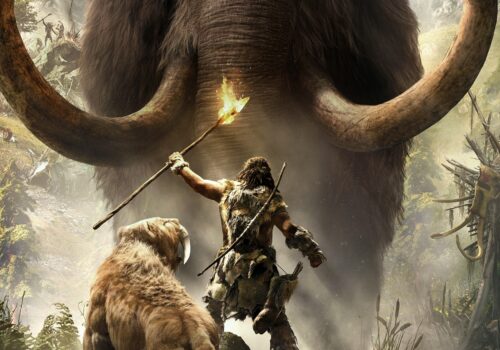
Gun Dogs
By Tim Askins
When Ruddy climbed into the deer stand he sat heavily like an old man and did not move for several moments. The quiet of the woods settled upon him like one of his Great Aunts hand stitched quilts. The Great Horned Owl called out “Hoo HooHoooooo HooHoo”. Farther down the hardwood grove by the mill creek another added to his melancholy mood by answering “Hoo HooHoooooo”. Their calls continued as Ruddy scanned the area for signs of movement. The December sun collected itself in a patch of longleaf pines as it cut towards the horizon. Last light cast long shadows in the pine woods and the owls’ “Hoo Hoo”continued.
The calls of Great Horned Owls can be especially disturbing, occasionally uttering sounds resembling the half-choking cries of a person nearly strangled. The Cherokee word, skili, was used to refer to both witches and Great Horned Owls. These witches were believed to shape shift and transform themselves into other beings and animals. It was believed they chose the owl shape to fly silently in the darkness of the night to cast spells on their intended victims as they slept. It is the Owl’s connections with death, the afterlife, and rebirth that truly mark them as a force to be reckoned with. Small wonder, then, seeing or hearing an owl is believed to be a bad omen, often signaling serious illness or death to come, or the embodied spirits of the dead or such spirits.
On this evening in the deer stand the owl’s calls seemed more ominous than usual. Ruddy’s mind ran over the details of the day’s earlier events. A single tear struggled to trace a path down his check as he remembered the lost look from Doc Rainey’s pointer. King was his favorite dog in the kennel. While the other dogs never left the kennel except to load into the back of the truck and head for the quail woods, Ruddy had taken King out most days to walk the woods scouting for birds or hunting sheds. Sometimes they took a walk just for fun and usually ended up going by Ruddy’s house to get a scrap from the fridge as a treat before returning King to the kennel before Doc Rainey got home.
King was also Doc’s prize pointer and had sired many litters. He likely would have whooped Ruddy if he knew he was treating him softly. Doc, like many of his contemporaries, would never think of having a working dog out lollygagging. King was a kennel dog who lived his years outside and nobody was supposed to be playing with the kennel dogs. Treating the hunting dog like that would surely ruin his nose and deflate is natural abilities. Giving him treats was just as likely to make him fat, ill-mannered and unfit for the field.
What Doc didn’t know would not hurt him Ruddy surmised. Afterall, King had always been the best dog in the kennel, despite his dotting over him. The past few seasons King had relied on his nose and patience to find birds where the young dogs had over run them in their haste. Now in his 13th year King could still find the birds but could not last with the younger dog’s drive.
After his tenth birthday Ruddy’s brother, Jimbo, had started keeping the kennel for Doc. King was just a puppy in training. Ruddy was four years behind his brother and merely a pup himself but tagged along to the kennel when he could. The boy and the pointer dog forged a close bond. When his brother graduated high school Ruddy had taken over the kennel full time and his jaunts with King became a daily routine.
He was well past seventeen but Ruddy had nearly burst into tears when Doc told him on this Saturday morning it was time to take King “to the creek”. It was not his first time going to the creek. He was only eight when he went the first time with Jimbo. Doc was not going to feed a dog that couldn’t hunt and when that time came the boys were tasked with walking the dog to Mill Creek and shooting it with the ratty old 12-gauge single shot and then burying the remains.
This time was different, it was King. Ruddy wasn’t sure he could do it but there was no choice. He took the gun on his shoulder and got King out of the kennel. Of course, the dog thought he would be pointing birds in the piney woods and jumped about waging and smiling which had the opposite effect on Ruddy. He walked King the long way down by the Cumberland’s then over to the cow pasture and finally ended up at the creek. While King was getting a drink, he shouldered the gun and pulled the trigger. The only sound in the woods was a deafening click. The ratty old gun didn’t fire. The boy thought he might just bash it against the water oak and be done with it.
King paused and looked back at his boy with canine eyes of understanding. The second pull of the trigger resulted in a sickening roar and King’s body crumpled into the oak leaves. Digging the hole was a mindless task lubricated with tears and the deed was complete.
Since my friend Ruddy walked King ‘to the creek’ 50 years ago, I have talked with many trainers and seasoned dog men and women. Most pros that have been around agree that what is considered typical for today’s hunting dog was not the norm even Thirty years ago. In my own long-gone youth “Dad’s hunting dogs” were his hunting dogs. They did not play with us and the thought of them being indoors was incomprehensible. My own first pointer was an aging bitch given to me by my Hartsville friend, Blake Boyd. She was too old to have more litters and he, like Doc wasn’t feeding a ‘gundog’ that could not hunt or bring forth more offspring. She was the perfect dog for an 11 year old to walk the fields in search of old Bobwhite.
In recent decades the trend has swung 180 degrees-many, if not most, of the ‘gundogs’ double as family pets and live indoors. Interestingly, though guns have been around since the 1300’s and dogs much longer the term ‘gundog’ only emerged in the 1700’s and did not enter the common vernacular until the middle of the 19th century. This uniquely English word has no equivalent in French, Italian, German or Spanish. With over 200 recognized breeds today, there are thirty-eight breeds designated as ‘gundogs’ including Retrievers, Pointers, Setters and Flushing Spaniels.
While the first encounters with humans taming wolves likely date back more than 100,000 years, over the past 15-20 thousand years man and dog have developed partnerships including various types of working arrangements and the mutual ability to give each other aid and affection. We have nurtured our trust and enjoyed the benefits of companionship, protection, and togetherness. Fortunately, the practice of eating our dogs has fallen out of favor, at least in the modern Americas and European nations. As recently as the early 1800’s Meriwether Lewis quipped “I prefer it to lean venison or elk, and it is very far superior to the horse in any state.” The men of the expedition consumed almost 200 dogs on their journey of exploration.
The symbiotic in-home relationship between humans and dogs may have resulted in our dogs learning more and inspired the humans to train the dog more. Some breeds like the German Short Hair were breed specifically to be able in the field and a companion by the hearth.

Where are we headed with modern hunting dogs? What do we hope to achieve? Does living indoors hamper the hunting instincts and abilities of a canine? Are the professional dogs in kennels less adept due to the isolation? Just a few of the questions resulting from the tapestry of our relationships with these wonderful companions and the people who strive to preserve and improve these breeds we call ‘gundogs’ today.
Quail plantations today might keep anywhere from 6 to 60 gundogs. It would be unthinkable to have that many dogs roaming around the house and to everyone’s benefit these pros of the field stay in the kennels. When I think of kennel dogs, I imagine the marines. They are trained to do a job they relish, then fed and kept, exercised regularly and trained some more. When the dog box gets opened, they explode onto the field with the energy and drive of a demon possessed. Recreational dog owners (most of us) might empathize with the kennel dogs, lamenting their lack of quality time and affection, but you could never doubt the care they get.
Professional guides and trainers depend on their dogs and horses and treat them as if they were created by Antonio Stradivari himself. On plantation quail hunts you will witness the attention paid to the canine athletes before the hunt, during the hunt and after the hunt. Many guides run as many as forty dogs and a dozen horses and are amateur veterinarians because they must be. Keeping the herd safe and healthy is job one. You will see them check the dog’s ears, pads and lips after a course ensuring no harm has come and ensuring the dog will be ready to run again tomorrow. Afterall when you invest somewhere in the neighborhood of $25,000 over the life of a gundog, it’s just good business to keep them healthy.
On the other hand, does keeping our dogs indoors dilute or reinforce their abilities? The answer lies in the master and the dog. The extra time spent together can strengthen the bond between human and dog. Afterall, they strive to please us while depending on us for food and care. But throw children in the mix, incessant games of catch or chew toy tugging and there is a recipe for a negative impact. The larger impact might be the trend to keep gundogs as pets and never let them see the field. The result is breed specific rescue groups to take in gundogs bought by otherwise good-hearted folks who don’t always understand the demands of these high functioning breeds, at least until they find that the precocious little GSP they left in their apartment all day eats all the furniture.
We face a major problem today finding access to good training grounds for our gundogs. Of course, the pros have plenty of ground to work and many hunters have private land as well. Public access is another story, especially for pointing dogs. While you can train a retriever in your back yard, birddogs require quail woods and unfortunately public land with quail is scarce.
The lack of access is also a major impediment to new bird hunter recruitment. A sixteen-year-old might train his Lab or Boykin in a neighborhood pond or even at the beach, then expect to be successful shooting and retrieving some ducks over the course of the season with the hunting partner of his or her dreams. Birddogs are a different story. Where a youngster in the distant past might have reasonably expected to train a bird dog at a relative’s or neighbor’s farm, those opportunities have all but vanished. The trick now is how to harness all that youthful potential and turn it into new bird hunters.
The future of bird hunting, and by that I mean specifically quail and woodcock, rests with our ability to make birddog training available. Future conservation efforts must include specific areas that allow release birds for training so that our young hunters can have the opportunity to witness a covey rise behind the steady point of the bird dog they trained. They deserve to hope for a decade or more of hunting trips, stoic and steady points, and memories afield for a lifetime.
This article previously appeared in Charleston Mercury.

Tim Askins
is a USCG Master Mariner and has been a licensed captain since 1980. He continues to operate his real estate development and construction business while devoting time to his farm, children, and wife, Karen. He is an advocate for wildlife habitat with Quail Forever and returning ex-convicts to the workplace with the Turning Leaf Project.


You May Also Like

Tsali Pass: You owe it to the Mountain- Pt.2
April 27, 2022
The Greatest Trophy in the History of Man
March 11, 2024

One Comment
Maggie Boineau
Beautifully written, and I enjoyed every word, even though I shed some tears.